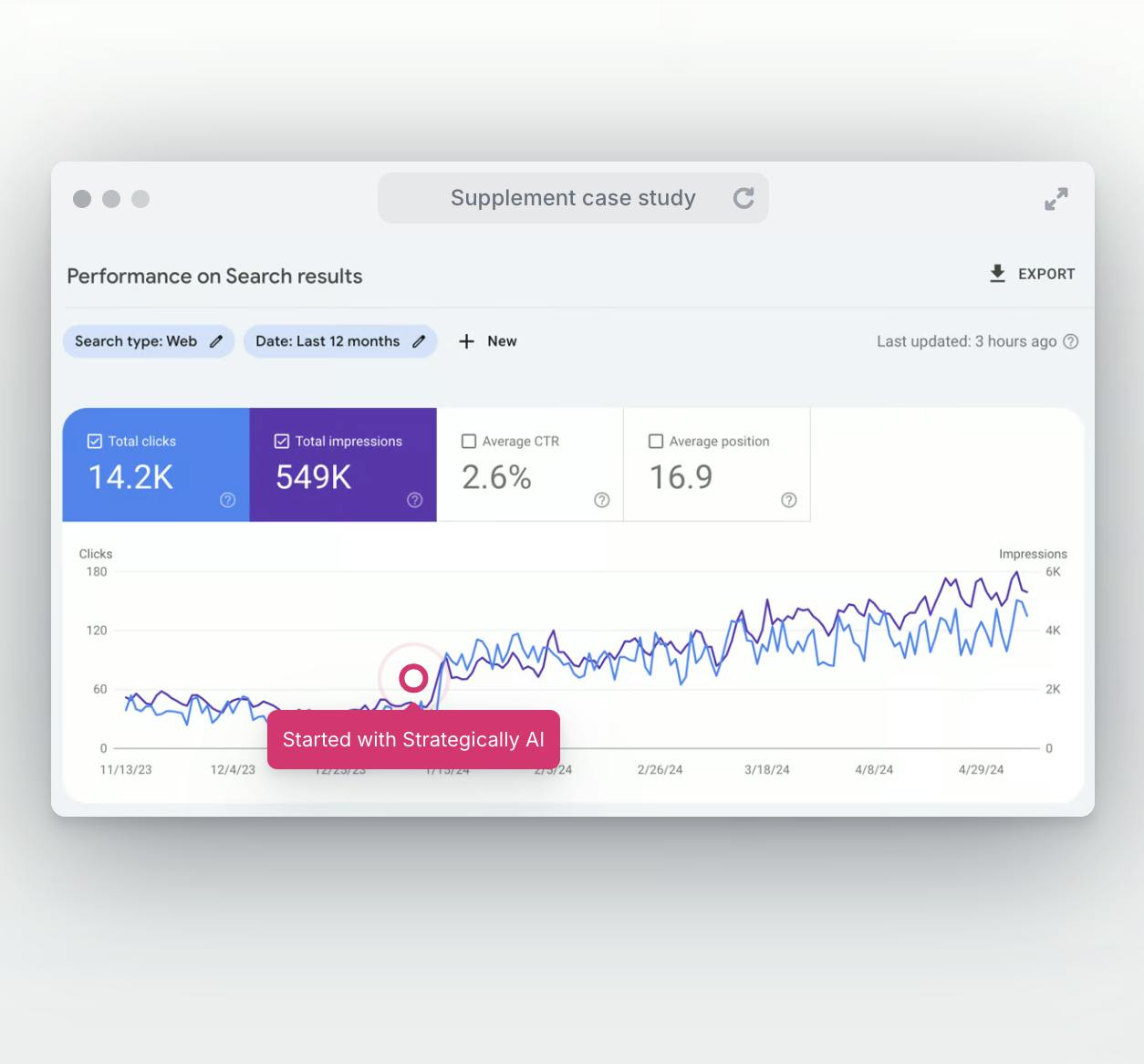Introduction to SEO Writing
Hey there, fellow digital enthusiasts! Are you ready to dive into the world of SEO writing? It's not just about throwing in a bunch of keywords; it's an art and a science. Let's embark on this journey to make your blog posts the stars of Google rankings.
In today's digital age, where the internet is saturated with content, standing out is more crucial than ever. SEO writing is your secret weapon in this battle for visibility. It's about crafting content that's not only informative and engaging but also optimized for search engines. This means when your target audience types in those critical search terms, your content pops up, ready to answer their questions and meet their needs. So, let's unravel the mysteries of SEO writing and turn your blog posts into Google's favorites!
Understanding SEO Basics
What is SEO?
SEO, or Search Engine Optimization, is the heartbeat of your online content. It's a series of strategies aimed at increasing your website's visibility in search engine results. Think of it as the compass that guides users to your content. When you optimize your content for search engines, you're essentially aligning it with the complex algorithms that determine which pages are most relevant and valuable for a given search query.
But SEO isn't just about algorithms; it's about understanding your audience. It's about creating content that answers questions, provides solutions, and offers value. When you master SEO, you're not just chasing search engine rankings; you're building a bridge between your content and your audience, ensuring that they find you when they need you the most.
Importance of SEO in Digital Marketing
In the digital world, SEO is king. It's what makes your content visible and accessible to your target audience. Without it, even the most well-written articles might never see the light of day. SEO is the driving force behind digital marketing strategies, as it helps businesses reach their target audience organically. It's a cost-effective way to increase website traffic, build brand awareness, and establish authority and trust in your industry.
Moreover, SEO is not a one-time task but an ongoing process. As search engines evolve and user behaviors change, so must your SEO strategies. This dynamic nature of SEO makes it both challenging and exciting, as there's always something new to learn and implement.
Keyword Research: The Foundation of SEO Writing
Tools for Effective Keyword Research
To kickstart your SEO journey, you need the right tools. Platforms like Google Keyword Planner and SEMrush are your treasure maps to finding the right keywords. These tools offer invaluable insights into what your target audience is searching for, the language they use, and the type of content they seek.
Google Keyword Planner, a part of the Google Ads suite, is a fantastic tool for beginners and experts alike. It allows you to discover new keywords related to your topic and see estimates of the searches they receive and the competition for those terms. This information is crucial in selecting keywords that are not only relevant but also achievable in terms of ranking.
SEMrush takes it a step further by offering a comprehensive suite of tools that include keyword research, site audits, competitor analysis, and more. With SEMrush, you can dive deep into keyword trends, difficulty scores, and even see which keywords your competitors are ranking for. This level of detail helps you craft an SEO strategy that's not just effective but also competitive.
Keyword research is the foundation upon which successful SEO writing is built. By understanding and utilizing the right keywords, you can ensure that your content resonates with your audience and ranks well in search engine results. Remember, the goal is to find a balance between high search volume and low competition, targeting those sweet spot keywords that will drive traffic to your site.
Understanding Keyword Intent
It's not just about the keywords; it's about the intent behind them. Are your readers looking to buy, learn, or find a specific service? Understanding this will shape your content strategy. Keyword intent is essentially the purpose behind a search query. It's what the user expects to find when they type a query into a search engine. There are generally four types of search intents:
- Informational Intent: Here, the user is looking for information. For example, "how to bake a chocolate cake" indicates the user wants a recipe or a guide.
- Navigational Intent: The user is trying to get to a specific website or page, like searching for "Facebook login" or "OpenAI blog."
- Transactional Intent: This is where the user intends to make a purchase or engage in another online transaction. A search like "buy noise-cancelling headphones" is a clear sign of transactional intent.
- Commercial Investigation: These users are likely in the decision phase, looking to compare products or services before making a purchase. Searches like "best smartphones 2023" or "Mailchimp vs. Sendinblue" fall into this category.
Understanding the intent behind the keywords you target is crucial. It allows you to tailor your content to meet the specific needs of your audience, increasing the likelihood of engagement, conversion, and retention.
Crafting the Perfect SEO-Friendly Title
Importance of Title Tags
Your title tag is your first impression in the search engine world. It's what entices readers to click on your article. Make it count! The title tag not only influences your rankings but also directly impacts your click-through rates. It's the first thing users see in the search results, and it gives them an idea of what to expect from your page. A well-crafted title tag can be the difference between someone clicking on your content or choosing a competitor's.
Tips for Creating Compelling Titles
A great title is a blend of creativity and strategy. Use your primary keyword and keep it intriguing yet clear. Here are some tips to craft titles that catch both the user's eye and the search engine's algorithm:
- Incorporate Primary Keywords: Your main keyword should be in the title, ideally towards the beginning. This not only helps with SEO but also immediately tells the reader and the search engine what your content is about.
- Be Clear and Concise: While creativity is important, clarity is crucial. Your title should give a clear indication of the content within. Avoid being too vague or using jargon that might confuse readers.
- Invoke Curiosity: Titles that spark curiosity can increase click-through rates. Phrases like "5 Secrets to..." or "What You Need to Know About..." can make users eager to read more.
- Use Power Words: Words like 'Ultimate', 'Amazing', 'Complete', 'Guide', 'Easy', 'Quick', 'Simple', and 'Best' can make your titles more compelling. They convey a sense of authority and usefulness.
- Keep It Under 60 Characters: Longer titles get cut off in search results. Keeping it under 60 characters ensures that your entire title is displayed.
- Avoid Clickbait: While tempting, clickbait titles can harm your credibility and bounce rate. Ensure your title accurately reflects the content of your article.
By mastering the art of title creation, you significantly enhance the visibility and appeal of your content. Remember, a great title is a gateway to your article; make it inviting and relevant.
Mastering On-Page SEO
On-page SEO is a critical component of your overall SEO strategy. It involves optimizing various elements on your website to improve its visibility and ranking on search engines. Let's delve into some key aspects of on-page SEO.
Optimizing Headings and Subheadings
Headings are not just for structure; they're also for SEO. Including keywords in your H2 and H3 tags can significantly boost your SEO power. Here's how to optimize them effectively:
- Use Relevant Keywords: Incorporate primary and secondary keywords naturally into your headings and subheadings. This helps search engines understand the main topics of your content.
- Maintain a Clear Hierarchy: Your headings should follow a logical structure (H1, H2, H3, etc.) to help search engines and readers navigate your content. The H1 tag is typically reserved for your main title, with H2s and H3s for subtopics.
- Make Them Informative and Engaging: Headings should give readers a clear idea of what the following section is about. They should be intriguing enough to encourage readers to continue reading.
- Keep Them Concise: Long headings can be cumbersome. Aim for brevity while being descriptive.
The Role of Meta Descriptions
A well-crafted meta description is like a movie trailer for your content. It should be engaging and keyword-rich to draw readers in. While meta descriptions don't directly influence rankings, they are crucial for click-through rates. Here's how to write effective meta descriptions:
- Include Target Keywords: Just like with headings, include your primary keywords in your meta description.
- Be Descriptive and Compelling: Provide a clear summary of what the page is about and why it's valuable to the reader.
- Keep It Under 160 Characters: This is the ideal length to ensure your entire description is shown in search results.
- Encourage Action: Use a call-to-action, like "Learn more" or "Discover how," to entice users to click.
The Art of Creating Engaging and Relevant Content
Balancing Keywords and Readability
Stuffing keywords is a big no-no. Your content should flow naturally. Remember, you're writing for humans first, search engines second. Here's how to strike the right balance:
- Use Keywords Naturally: Your keywords should fit seamlessly into your content. If they feel forced or excessive, it's likely to turn off readers and search engines.
- Focus on User Experience: Write content that's easy to read and engaging. Use short paragraphs, bullet points, and clear language.
- Leverage Synonyms and Related Terms: This not only avoids keyword stuffing but also helps your content appear for related search queries.
Using Images and Videos Effectively
Visuals are your secret weapon. They make your content more engaging and shareable, plus they can be optimized for SEO too. Here's how to use them effectively:
- Use High-Quality Images and Videos: Quality matters. Blurry or irrelevant visuals can harm your credibility.
- Optimize File Names and Alt Text: Include relevant keywords in your image file names and alt text to help search engines understand and index them.
- Ensure Fast Loading: Optimize the size of your images and videos to ensure they don't slow down your page loading times.
- Use Relevant and Engaging Visuals: Your visuals should add value to your content, whether by illustrating a point, breaking up text, or providing additional information.
By mastering these on-page SEO elements, you can significantly improve the visibility and effectiveness of your content in search engine rankings.
Link Building Strategies
Link building is a vital part of any SEO strategy. It's not just about getting as many links as possible; it's about creating meaningful connections within and outside your website that enhance user experience and improve your site's authority.
Internal Linking
Internal linking is the practice of linking to other pages on your own website. It's a powerful tool for several reasons:
- Improves User Experience: By providing relevant links, you're helping users find what they need, improving their overall experience on your site.
- Increases Page Views and Time on Site: When users follow internal links, they're more likely to spend more time on your site, exploring additional content.
- Boosts Page Authority: Internal links distribute page authority throughout your site, helping to boost the SEO performance of individual pages.
- Helps Search Engine Crawlers: Internal links aid search engines in discovering and indexing pages on your site.
To effectively use internal linking, ensure that your links are relevant and add value. Overloading a page with internal links can be counterproductive, as it may overwhelm the reader and dilute the value of each link.
External Linking and Backlinks
External links and backlinks are crucial in building your website's authority and credibility.
- External Linking: Linking out to reputable, authoritative sites can add value to your content. It shows that your content is well-researched and backed by reliable sources. However, make sure these links are relevant to your content and add value for your readers.
- Backlinks: Backlinks are links from other websites to your site. They are one of the most powerful ranking factors in SEO. Backlinks from high-authority and relevant sites can significantly boost your site's credibility and search engine ranking.
To acquire quality backlinks, focus on creating high-quality, valuable content that others want to reference. Guest blogging, collaborating with influencers, and engaging in digital PR can also help build backlinks.
The Importance of Mobile Optimization
With most searches happening on mobile devices, having a mobile-friendly website is no longer optional; it's essential. Mobile optimization affects both user experience and SEO:
- Improved User Experience: A mobile-optimized site provides a better browsing experience for users on mobile devices. This means faster load times, readable text without zooming, and easy-to-click links.
- Better Search Engine Ranking: Google uses mobile-first indexing, meaning it predominantly uses the mobile version of the content for indexing and ranking. A non-optimized mobile site can negatively impact your rankings.
To ensure your site is mobile-friendly, use responsive design, which automatically adjusts the layout based on the device's screen size. Also, optimize images, leverage browser caching, and minimize code to improve loading times.
Keeping Content Fresh and Updated
Regularly updating your content is crucial for maintaining its relevance and effectiveness in search engine rankings:
- Improved SEO: Search engines favor fresh, updated content. Regular updates signal to search engines that your site is active and relevant.
- Increased User Engagement: Updated content can provide new value to your audience, keeping them engaged and encouraging repeat visits.
- Staying Relevant: Updating your content ensures that it stays accurate and relevant, especially in fast-changing industries.
To keep your content fresh, regularly review and update your existing articles, blog posts, and other content. This could involve updating statistics, adding new information, or revising outdated sections.
By implementing these strategies, you can enhance your website's SEO performance, improve user experience, and maintain a strong, authoritative online presence.
Utilizing Analytics to Refine SEO Strategies
Data is your friend. Use analytics to understand what's working and tweak your strategies accordingly. Analytics tools like Google Analytics offer a wealth of information that can guide your SEO efforts. Here's how you can utilize this data:
- Traffic Sources: Understanding where your traffic is coming from helps you identify which channels are most effective. Are your visitors coming from organic search, social media, or referrals?
- User Behavior: Analyze how users interact with your site. Which pages have the highest engagement? Where do users spend the most time? This information can help you understand what content resonates with your audience.
- Keyword Performance: Identify which keywords are driving traffic to your site. Are they aligned with your SEO strategy? This insight can help refine your keyword targeting.
- Conversion Rates: Track how well your content converts visitors into customers or leads. High traffic with low conversions may indicate a mismatch between your content and user intent.
- Bounce Rate and Exit Pages: High bounce rates and certain exit pages can indicate where your content might not be meeting user expectations.
Regularly reviewing and acting on this data allows you to make informed decisions, enhancing your SEO strategy's effectiveness over time.
Common SEO Writing Mistakes to Avoid
In the world of SEO writing, certain pitfalls can hinder your content's performance. Here are some common mistakes to avoid:
- Keyword Stuffing: Overusing keywords disrupts the natural flow of your content and can result in penalties from search engines. Focus on using keywords naturally and sparingly.
- Neglecting Mobile Optimization: With the increasing prevalence of mobile browsing, ignoring mobile optimization can significantly impact your search rankings and user experience.
- Ignoring Analytics: Not utilizing analytics data is a missed opportunity. Analytics provide insights into your content's performance and how to improve it.
- Forgetting About User Experience: SEO isn't just about pleasing search engines. A focus solely on SEO without considering user experience can lead to content that's unengaging and unappealing to your audience.
- Neglecting Meta Descriptions and Title Tags: These elements are crucial for click-through rates in search results. Ignoring them can result in missed opportunities to attract organic traffic.
Advanced SEO Tips and Tricks
To really stand out in search engine rankings, consider these advanced SEO strategies:
- Structured Data: Implementing structured data (Schema markup) helps search engines understand your content better, potentially leading to rich snippets in search results, which can improve visibility and click-through rates.
- Voice Search Optimization: With the rise of digital assistants, optimizing for voice search is becoming increasingly important. This involves focusing on natural language and question-based queries.
- Local SEO: For businesses serving specific areas, local SEO is crucial. This includes optimizing for local keywords, creating a Google My Business account, and managing local listings and reviews.
- Content Depth and Quality: Search engines favor comprehensive content that thoroughly covers a topic. In-depth, quality content can help establish your site as an authority.
- User Intent Matching: Tailor your content to match the specific needs and intents of your target audience. This increases the likelihood of engagement and conversion.
Conclusion
SEO writing is an ongoing journey. It's about understanding your audience, mastering the technical aspects, and constantly evolving. The digital landscape and search engine algorithms are always changing, and so should your SEO strategies. Keep learning, keep experimenting, and watch your blog posts climb to the top of Google rankings! Remember, the key to SEO success is a blend of staying informed, being adaptable, and consistently delivering value to your audience.
FAQs
How often should I update my SEO strategies?
SEO is dynamic, so it's good to review and tweak your strategies every few months. The digital landscape, especially search engine algorithms, is constantly evolving. Regularly updating your SEO strategy ensures that you stay in line with the latest trends and algorithm updates. It's also important to analyze your website's performance data regularly. This analysis can reveal insights into what's working and what isn't, allowing you to make informed adjustments. Keep an eye on your keyword rankings, organic traffic, backlink profile, and any significant changes in search engine guidelines.
Can I do SEO writing myself, or should I hire a professional?
While you can start on your own, a professional can bring in more expertise and advanced strategies. If you're new to SEO, there's a wealth of resources and tools available to help you learn the basics. However, SEO can be complex, and it requires a significant time investment to master. Hiring a professional or an agency can be beneficial if you're looking for more advanced strategies, have specific goals, or operate in a highly competitive industry. Professionals stay up-to-date with the latest trends and have the experience to implement effective strategies.
How long does it take to see results from SEO?
SEO is a long-term game. It can take several months to see significant changes in rankings. The time it takes to see results from SEO efforts can vary based on numerous factors, including the competitiveness of your industry, the current state of your website, the quality of your content, and the strategies you implement. Generally, it might take anywhere from three to six months to start seeing significant results, with ongoing improvements over time. Patience and consistency are key in SEO.
Is SEO only about keywords?
No, SEO is a holistic process that includes keywords, user experience, site speed, content quality, and much more. While keywords are a fundamental aspect of SEO, they're just one part of a larger picture. Effective SEO involves optimizing your website's technical performance, creating high-quality and relevant content, ensuring a good user experience, building a healthy backlink profile, and maintaining a strong social media presence. All these elements work together to improve your site's visibility and ranking on search engines.
Does social media impact SEO?
Directly, no. But, a strong social media presence can drive more traffic to your site and increase your content's reach. Social media doesn't directly influence your SEO rankings, but it can have indirect benefits. A robust social media strategy can lead to more shares and exposure for your content, which may increase traffic to your website. This increased traffic signals to search engines that your content is valuable, which can positively impact your rankings. Additionally, social media can be a valuable tool for brand building and engaging with your audience.








